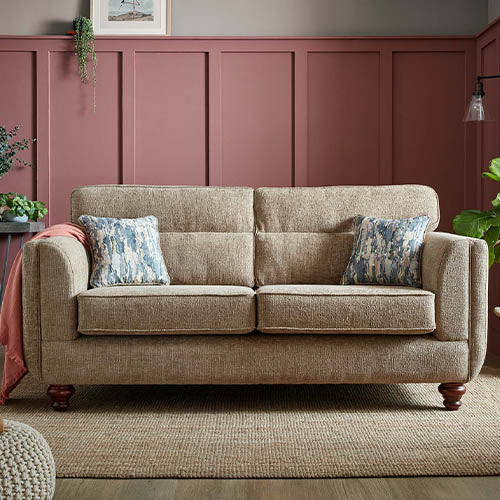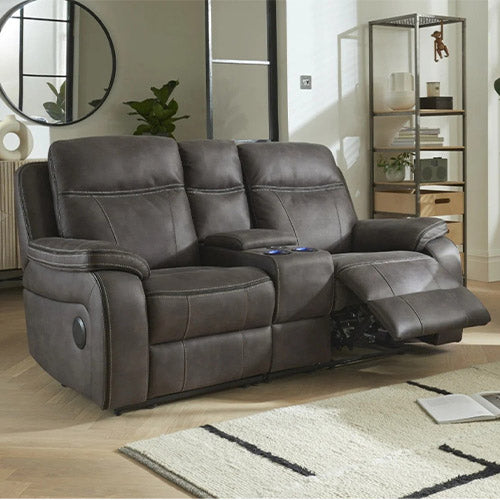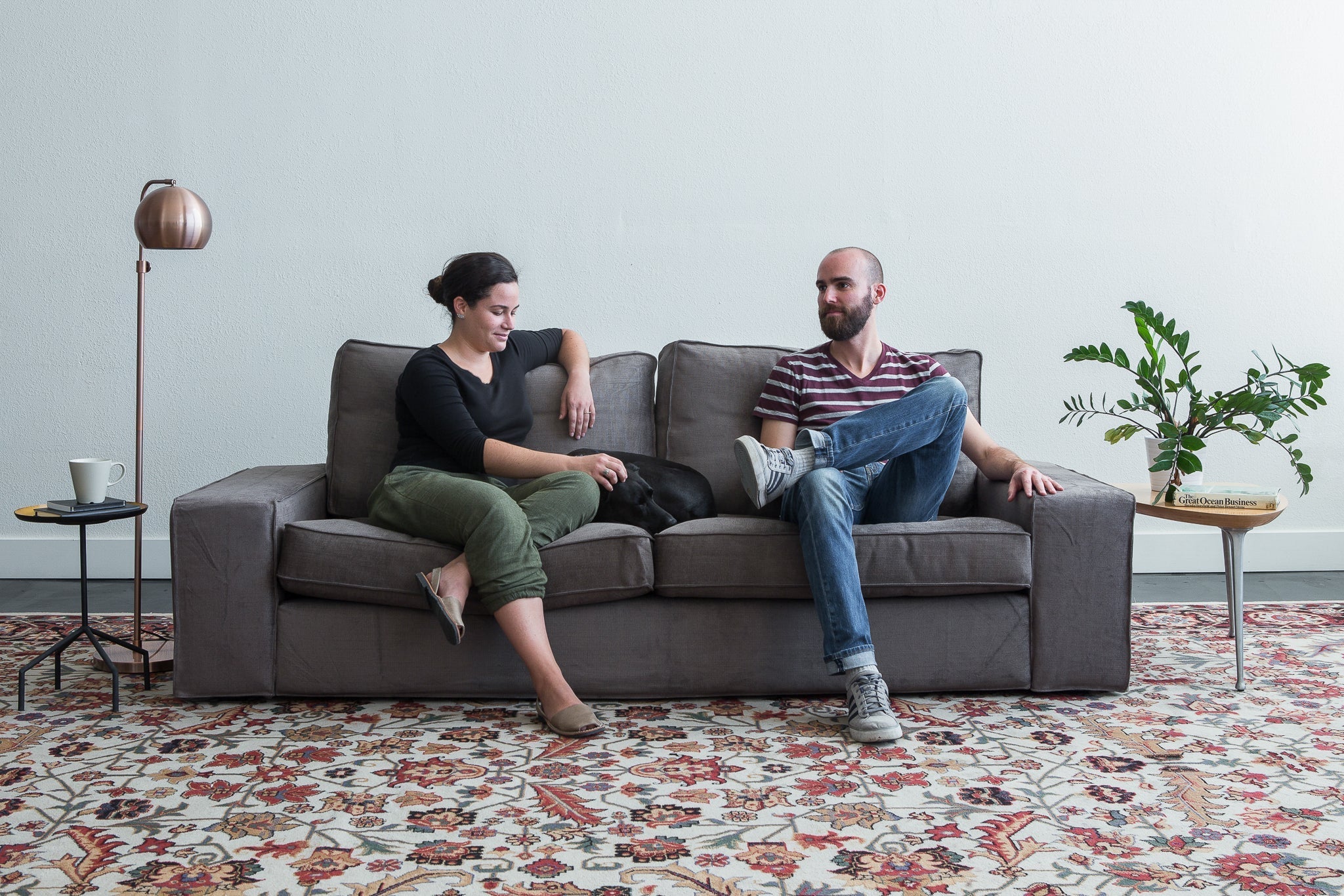The Science Behind a Comfy Living Room
Every home has that one special space where family gathers, where friends are entertained, and where the hassles of daily life momentarily fade away – the living room. It’s not just the plush cushions or the soft glow of ambient lighting that make it so inviting. There's an intricate dance between psychology, physiology, and design that crafts the perfect ambiance. Delve with us into the fascinating science behind what transforms a mere room into a comforting sanctuary. Explore how the familiar, the tactile, and even the intangible meld to create an environment that beckons and soothes, wrapping us in its embrace of warmth and comfort. Welcome to the science of cozy.

The Psychology Behind Comfort
Our minds play a significant role in how we perceive our surroundings, and the living room is no exception. The psychological components of comfort not only affect our emotional state but also determine how we interact with a space.
Emotional Comfort
For many of us, comfort is deeply intertwined with memories and nostalgia. A family heirloom, a cherished photograph, or even the scent of a particular fragrance can transport us to a different time and evoke feelings of warmth, safety, and belonging. In the context of a living room, objects and elements that trigger positive memories can create an emotionally nurturing environment.
Personalisation
A living room that mirrors one’s personal tastes, interests, and life journey inherently feels more comfortable. This isn't just about aesthetic appeal; it’s about seeing oneself reflected in one’s surroundings. When we personalize our spaces – be it through the books on our shelves, the art on our walls, or the mementos on display – we inherently feel a deeper connection, transforming the room into an extension of our identity.
Social Aspects
The living room, by design, is a communal space. How it's set up can either foster or hinder social interactions. Comfortable seating arranged to promote conversation, shared lighting that creates a sense of unity, and communal elements like board games or a shared music system can promote a feeling of togetherness. The sense of community and connection, whether with family or friends, significantly contributes to our perception of comfort.
Comfort, as we begin to see, is not just about the physical but is deeply rooted in our psyche. As we journey further, we'll uncover how our bodies and senses also play into this intricate dance of relaxation and ease.

The Physiology of Comfort
While our minds interpret and associate comfort, our bodies physically respond to the environments we create. When our physiological needs are met, we experience a tangible sense of relaxation and wellbeing. Let's dive into the physiological underpinnings that contribute to making our living rooms the ultimate comfort zones.
Ergonomics and Furniture
The design of our furniture doesn't just impact the aesthetics of a room; it directly influences our physical comfort. Ergonomically designed furniture supports our body's posture, reducing physical strain. Whether it's a chair that supports the curve of our spine, a coffee table at the right height to prevent overreaching, or a footrest that allows for proper leg positioning, ergonomic considerations ensure our bodies feel at ease.
Temperature Regulation
Ever noticed how a room that's too chilly or excessively warm can instantly disrupt comfort? Our bodies have an ideal temperature range, usually around 21°C (70°F), in which we feel most comfortable. Proper ventilation, insulation, and the use of fans or heaters play a crucial role in maintaining this ambient temperature. Incorporating elements like breathable fabrics for furnishings, or plants that regulate humidity, further enhance our physiological comfort.
Light and Its Effects
Lighting, both natural and artificial, has a profound effect on our bodies. Natural sunlight can boost our mood, enhance alertness, and regulate our circadian rhythms. In the evening, softer, warmer lights can help induce relaxation, preparing our bodies for rest. By optimizing the amount and type of light in our living rooms through proper window placements, curtains, and artificial lighting choices, we can create an environment that's in sync with our body's natural rhythms.
As we appreciate the tangible ways in which our living rooms can cater to our physiological needs, it becomes clear that the journey to creating a comfortable space is both an art and a science. In the following sections, we'll explore how our senses further add to this tapestry of comfort.

Sensory Comfort
Comfort isn't just a state of mind or a physiological response. Our senses - sight, touch, hearing, and even smell - play integral roles in shaping our perceptions of comfort. By catering to each sense individually, we can elevate the overall sensory experience of a living room, turning it into a haven of sensory delight.
The Importance of Texture
Textures have the power to invoke immediate reactions. The softness of a plush rug underfoot, the caress of velvet cushions, or the graininess of a wooden coffee table - each texture contributes to our tactile experience. By introducing a mix of soft, smooth, grainy, and other textures, we can create a dynamic and comforting tactile landscape in our living rooms.
Soundscapes
The ambiance of a room is heavily influenced by its soundscape. The gentle hum of a fan, the soft notes from a background playlist, or even the soothing silence broken only by the ticking of a clock can influence our comfort levels. Considerations like soundproofing, choosing non-echoing materials, or curating a calming playlist can enhance the auditory experience of the space.
Smell and Comfort
Scent is one of the most powerful triggers for memory and emotion. Introducing comforting scents, whether through scented candles, essential oil diffusers, or natural elements like flowers, can elevate the mood of a room. Choose fragrances that resonate with the intended ambiance, be it the freshness of linen, the warmth of vanilla, or the calmness of lavender.
In catering to our senses, we nurture both our bodies and souls, creating an atmosphere that truly feels like a sanctuary. Colour also has a profound effect on our comfort, click here to check out our blog on what your sofa colour says about you.

Tips for Enhancing Comfort
Creating a comfortable living room often comes down to practical choices. While understanding the psychology, physiology, and sensory aspects are crucial, putting them into practice requires actionable steps. Here are some tangible tips to elevate the comfort quotient of your living space.
Choosing the Right Furniture
- Material Matters: Opt for materials that are comfortable for extended periods, such as breathable fabric for sofas.
- Test Before Buying: Always sit on chairs, couches, or recliners before purchasing to ensure they offer the right support.
- Consider Space: Furniture should fit comfortably in the space without making it feel cramped. Multi-functional furniture can be a great choice for smaller rooms.
The Role of Decor
- Personal Touch: Incorporate personal items like family photos, souvenirs, or heirlooms.
- Less is More: Avoid clutter. A decluttered space feels more peaceful and spacious.
- Introduce Nature: Consider adding houseplants or even a small indoor water feature for a calming effect.
Incorporating Nature
- Air-Purifying Plants: Choose plants like spider plants or peace lilies that help improve indoor air quality.
- Natural Light: Ensure that window treatments allow for maximum daylight during daytime hours.
- Check out our blog on the best houseplants for your living room!
These practical considerations, when combined with the previously discussed principles, provide a comprehensive approach to creating a living room that feels like a haven. Whether you're redesigning or merely rearranging, let these tips guide your path to ultimate comfort.

Conclusion
The quest for comfort in our living rooms is a journey that delves deep into our minds, bodies, and senses. As we've seen, it's not just about plush cushions or aesthetic appeal. It's about creating a harmonious space where each element, from the furniture to the fragrances, coalesces to provide an all-encompassing feeling of well-being. The science and art of comfort remind us that our living spaces are reflections of our desires for warmth, connection, and relaxation. By understanding and implementing the various facets of comfort, we transform our living rooms from mere spaces to cherished sanctuaries. As you step into your living space today, take a moment to feel its embrace and, if needed, weave in those elements that enhance its welcoming allure. Comfort, after all, is where the heart finds its home.



